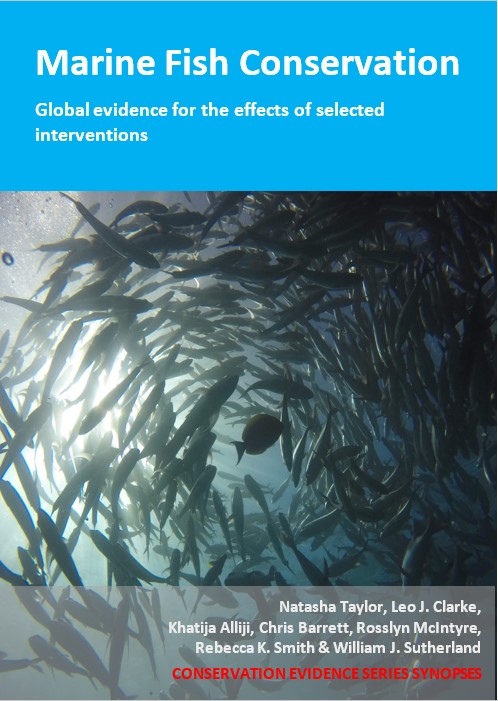Use artificial light on fishing gear
-
Overall effectiveness category Awaiting assessment
-
Number of studies: 2
View assessment score
Hide assessment score
How is the evidence assessed?
-
Effectiveness
not assessed -
Certainty
not assessed -
Harms
not assessed
Study locations
Supporting evidence from individual studies
A replicated, paired, controlled study in 2014 in an area of seabed in the Pacific Ocean, off Oregon, USA (Hannah et al. 2015) found that a shrimp trawl net with artificial lighting attached caught less unwanted fish catch in one of two configurations, compared to trawl nets without artificial lighting. In trials with artificial lights attached along the fishing line, fewer of five of five fish species/groups were caught than trawls without lights: Pacific eulachon Thaleichthys pacificus (1 vs 11 kg/haul), slender sole Lyopsetta exilis (1 vs 2 kg/haul), darkblotched rockfish Sebastes crameri (95 vs 537 kg/haul), other juvenile rockfish Sebastes spp. (55 vs 126 kg/haul) and other small flatfish Pleuronectiformes (171 vs 559 kg/haul). In trials with artificial lights located near to a size sorting grid, catch rates were similar for three of the five species/groups compared to trawls without lights: darkblotched rockfish (390 vs 428 kg/haul), juvenile rockfish (72 vs 109 kg/haul) and small flatfish (291 vs 287 kg/haul); and were higher for eulachon (33 vs 16 kg/haul) and sole (1.5 vs 0.8 kg/haul). Catches of target ocean shrimp Pandalus jordani were similar (or the same) with and without lights, irrespective of location (fishing line, with: 204, without: 205 kg/haul; grid, with and without: 117 kg/haul). In July 2014, paired shrimp trawls were fitted with standard trawls with a rigid size-sorting grid (19 mm bar spacing). Trawls with 10 green lights fitted to the fishing line (42 trawls) or one to four lights fitted next to the grid (12 trawls) were compared with trawls without lights. Catches from each net were sorted by species, counted and weighed.
Study and other actions testedA replicated, controlled study in 2016 in an area of seabed in the Barents Sea, Norway (Larsen et al. 2018) found that shrimp trawls with LED lights attached to a size-sorting escape grid did not improve the size-selectivity of long rough dab Hippoglossoides platessoides, Atlantic cod Gadus morhua, haddock Melanogrammus aeglefinus and redfish Sebastes spp. to trawls without lights on the grid. The probability of capture across all sizes was similar with and without LED lights for all four species (data reported as graphical analysis). For each species, the length at which fish had a 50% chance of escape was similar with and without lights: plaice (19 vs 19 cm), cod (19 vs 19 cm), haddock (17 vs 15 cm) and redfish (14 vs 14 cm). Catch probabilities of commercial target deep-water shrimp Pandalus borealis were also similar between trawl designs (data reported as graphical analysis). In November 2016, a total of 16 experimental deep-water shrimp deployments were carried out in darkness at 361–383 m depths. Trawl nets were fitted with a rigid Nordmøre size-sorting escape grid (1.5 × 0.75 m) with a mesh guiding panel to direct catch to the bottom of the grid and a triangular escape outlet in the upper trawl panel. Eight of the 16 trawls were fitted with four green LEDs positioned on the lower section of the grid pointing in the towing direction at the same angle as the grid, and eight were without LEDs. A 19 mm mesh cover sampled fish escaping through the escape outlet.
Study and other actions tested
Where has this evidence come from?
List of journals searched by synopsis
All the journals searched for all synopses
This Action forms part of the Action Synopsis:
Marine Fish Conservation





)_2023.JPG)














